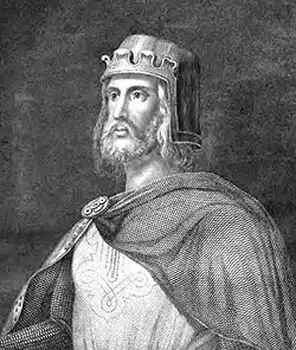Henry The Fowler
Henry the Fowler or Henry of Saxony was Duke of Saxony and King of Germany during the 10th century. He transformed a medieval German state then known as East Francia into Kingdom of Germany. He is considered as the founder of Saxon Dynasty.
Henry strengthened the borders of German borders and successfully defended against invasions of Pagan tribes. Legend has it that when Henry was informed by messengers that he was to be the next king, he was laying bird snares. This is why he was named Henry the Fowler.


Early Life: Henry the Fowler was born in 876 in Memblen, Saxony-Anhalt (present day Germany). His father, Otto the Illustrious was Duke of Saxony. In 912, Otto died and Henry I was appointed as Duke of Saxony. In 909, Henry married Hathberg Von Merseburg but the marriage was annulled in 909 after it was found that she had become a nun after death of her first husband. Later that same year, Henry married Matilda daughter of Dietrich, Count of Westphalia.
Their son Otto I succeeded Henry and became Holy Roman Emperor later. Matilda is credited with establishing many religious institutions and was later canonized as well. Henry was an able ruler who strengthened his Duchy against neighboring duchies of Franconia and Bavaria. Henry was also in a running feud with Conrad I, King of East Francia over territories in Thuringia.

Reign: Despite having a territorial feud with King Conrad, Henry was recommended as heir by Conrad on his deathbed. Nobles from duchies of Saxony and Franconia supported his nomination, whereas nobles of Swabia and Bavaria did not recognize him as King. Henry was crowned on May 24, 919. Henry considered Germany as a confederation of duchies and not a single nation.
He enjoyed complete authority in Saxony and nominal sovereignty in Franconia but Swabia and Bavaria did not accord him any status. Henry resorted to use of force to make Duke of Swabia, Burchard submit to his authority successfully. He later allowed him to exercise control over civil administration of his duchy. In 921, after undergoing two military campaigns, Henry was successful in making Duke of Bavaria, Arnulf submit to his authority and drop his claim to German Throne. He allowed Arnulf as well to exercise control over his duchy, nonetheless.
He then went on a campaign to extend the borders of his kingdom. In 925, Henry defeated Giselbert, King of Lotharingia and invaded his territory which had become independent of Germany in 910. He later married his daughter Gerberga to Giselbert. Henry faced several crises during his reign and none was bigger than the 924 invasion of Germany by Hungarian warriors known as Magyars. He rightly decided to pay Magyars a tribute and reached a truce with them according to which Magyars agreed to a nine year cessation of hostilities against Germany.
During these nine years, Henry strengthened his army and fortified his towns and cities against outside invasions. He also added territories in Brendenberg and Meissen to his kingdom. In 929, Henry quelled a rebellion in Bohemia and strengthened his authority. In 933, when Magyars resumed their raids, Henry was well prepared and defeated their army through his capable cavalry at Riade. His last military campaign was invasion of Danish territory of Schleswig in 934.

Later Life and Death: Henry I died on July 2, 936 in Memleben. He was laid to rest in Quedlinberg Abbey, established by his beloved wife Matilda. She is also buried at the same location with her husband.
After Henry’s death his son, Otto became King of Germany and later the Holy Roman Emperor. The greatest achievement of Henry was to make Germany a united country under one authority.




